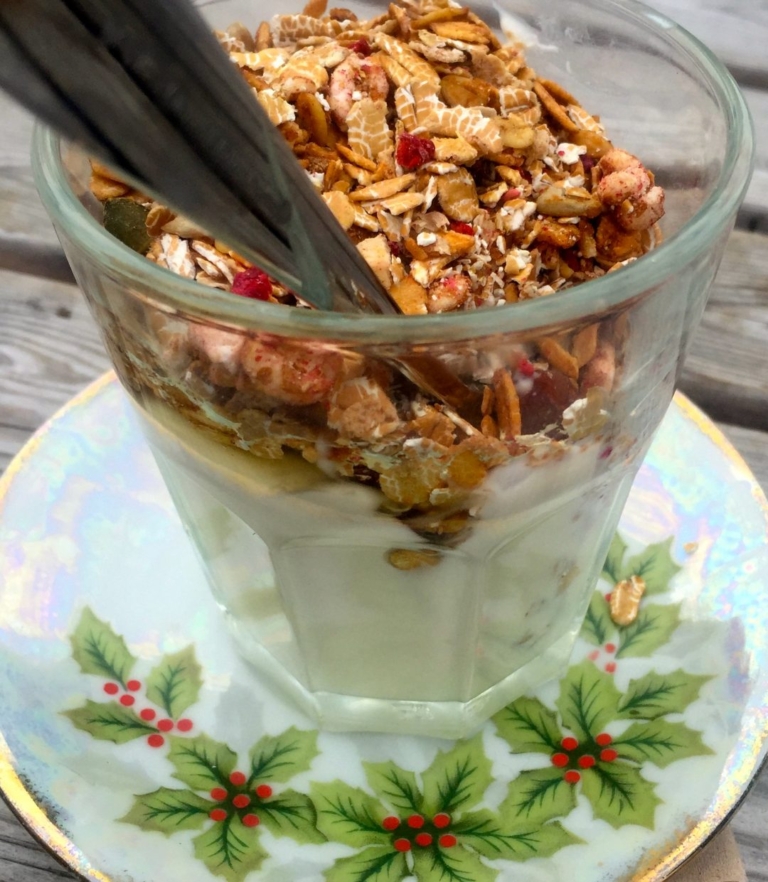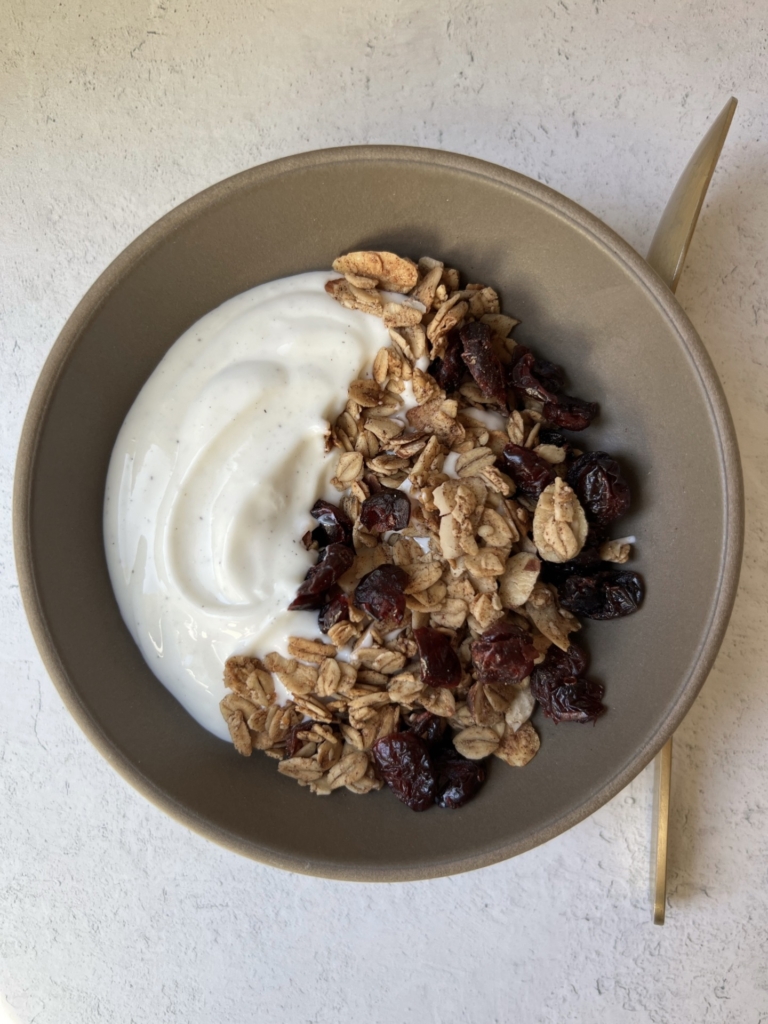Why I Now Like Yogurt (Skyr)

I have never loved yogurt. It was not the texture or tartness; to me, yogurt has always been too sweet. And then I went to Iceland…
Greek yogurt started a whole thick-and-creamy yogurt trend. Fage introduced their yogurt to the market in the late 90’s. By the early 2000s, it was all the rage. Greek yogurt is strained to remove the liquid whey. In doing so, the amount of protein is doubled–making it even more appealing and popular, especially to all the high-protein dieters out there.
Icelandic yogurt, known as skyr (pronounced skeer), once favored by the Vikings, is made the same way as Greek yogurt. But some slight differences make it, in my opinion, substantially better. Icelandic yogurt, sometimes referred to in Iceland as a “traditional dairy provision,” is strained more than Greek yogurt. This results in an even thicker, creamier, decadent, stick-to-your-spoon product with even more protein. All yogurts use cultures; it’s what makes yogurt, yogurt. Icelanders claim that their use of traditional bacterial cultures that date back hundreds of years is what sets this yogurt apart from all the others.
Compared to Greek yogurt, Skyr has a different, slightly sour dairy flavor, with just a hint of sweetness. It takes 4 cups of milk to make a single cup of skyr. Unflavored skyr is roughly 12% protein, 3% carbohydrates, and 0.5% fat. Traditional skyr is naturally low in sugar, though makers now often add fruit for natural sweetness. You typically find 3 to 6 grams of sugar per six-ounce container, substantially lower than typical American yogurt which can range from 12 to 26 grams per container! The result is a richer, healthier yogurt option.
When my family and I traveled to Iceland last summer, we visited Reykjavik Roasters, a well-known coffee house in downtown Reykjavik. My husband ordered the Skyr + Muesli, and my love of yogurt began. Well, love of skyr that is. Topped with homemade jam (or in my case drizzled with local honey), I found the perfect food.
I won’t say I’m obsessed, but it’s a close call. In the States, the skyr is not nearly as good as in Iceland, but it’s not bad. Brands like Skyr and Siggi’s are popular and readily available at places like Whole Foods and Safeway. Siggi’s can even be found in many Starbucks. In Iceland, skyr is typically consumed after lunch as a treat, layered with cream, Nordic fruits such as bilberries and lingonberries, and brown sugar. I add sliced banana or blueberries with a little low-fat granola and some sliced almonds for even more protein. Skyr has now become a staple in my weekly diet.
Homemade Skyr
Ingredients:
- 1/2 gallon milk (skim or 1%)
- 2 tablespoons Icelandic yogurt, (such as Siggi's plain yogurt)
- 1/8 cup warm water
- 2-5 drops of liquid rennet
Directions:
- Slowly heat the milk in a medium stock pot over low heat until it reaches 180 degrees F stirring frequently. Note, this could take up to one hour to heat to the desired temperature.
- Once the milk is heated remove it from the heat and let it cool to room temperature, for about 30 minutes. Remove any skin that has formed on the milk.
- Mix 1 cup cooled milk with the skyr and then pour back into the milk.
- Dissolve the rennet in the warm water and add it to the milk. Cover milk with a towel and let it sit in a warm place for 12 hours.
- When the whey has separated from the curd, place a clean tea towel or cheesecloth in a colander and place that in a bowl. Carefully pour the skyr into the colander. Tie the ends of the tea towel together and place the bowl in the fridge for several hours until the whey has drained off the skyr.
- Spoon the skyr into a bowl and mix vigorously with a spoon until completely smooth. Add any desired sweeteners and toppings for serving.



